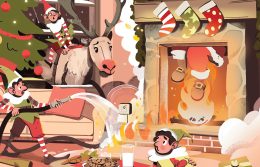The Importance of Controlled Burns in Texas
Before European settlement in Texas, fire was a natural element in the ecology of most ranges and played a crucial role in the sustainability of the ecosystem. A lack of regular fires can cause imbalance in animal and plant communities, leaving areas dry and vulnerable to larger, uncontrollable wildfires that are chiefly destructive.
That’s why many farmers and ranchers conduct controlled burns in Texas. Also referred to as prescribed burns, controlled burns are intentional fires that are planned, monitored, and guided to help preserve the natural ecosystem. By clearing out older vegetation, the fire recycles nutrients to allow new growth while removing invasive weeds and rotten plants.
Although these controlled burns may sound hazardous, if conducted with proper knowledge and training, they are harmless and actually enhance the natural ecosystem, enriching the soil, plant life, and wildlife. Here’s everything you need to know about controlled burns in Texas.
Why Are Controlled Burns in Texas Important?
Controlled burns remove dead grass and plants that have accumulated over the recent years. In fields, about a third of native grass openings should be burned every three years on a rotational basis. This stimulates a new growth of grass that has become dormant due to a lack of fire. Burning also controls invasive species such as cedar, locust, and persimmon, which are often undesirable and even harmful.
If you’re wondering about the safety of the woodland creatures, don’t worry: It’s instinctive for most animals to flee from the fire by flying, running, or burrowing underground. When the fire has been quenched, they will return safely to their homes.
Research has shown that insect populations in burned areas are seven times larger than those in unburned areas. The abundance of insects provides plenty of high-protein food for wild fowl like quail and turkey during the spring and summer.
Ranchers use smaller, more frequent controlled burns to help reduce the buildup of flammable fuels on farmland that could potentially feed wildfires.
When Is It Safe to Burn?
Generally, 20% of woodland sites in Texas are burned on a rotational basis between late November and February every five to six years. Burns are most effective and controllable right when leaves start to fall from trees.
Controlled burns are only executed under specific weather and soil conditions, so ranchers must take topography, temperature, humidity, and wind patterns into consideration when preparing for a burn.
Who Can Conduct Controlled Burns?
Despite its environmental benefits, fire is still a powerful and dangerous force — without proper knowledge, training, or safety precautions, even a controlled burn can turn deadly. That’s why only Certified and Insured Prescribed Burn Managers (CIPBM) may conduct them.
Applicants for the CIPBM certificate must finish a training course approved by the Prescribed Burning Board and successfully pass an exam. Applicants must also partake in practical field sessions to complete training. This includes a minimum of three years doing prescribed burns in a specific region, 30 days of burns in any region, and five days of burning as the responsible individual.
What Are the Insurance Requirements?
Special liability coverage is required to execute controlled burns. The state of Texas uses the ordinary negligence standard for prescribed burning. To complete certification, a CIPBM must have at least $1 million of liability insurance coverage for each occurrence of injury or destruction, with a policy period minimum aggregate limit of at least $2 million. Renewal fees are $500 for a two-year license.
Contact your local Texas Farm Bureau Insurance Agent to ask about coverage for controlled burns and the best coverage for your farm or ranch.
Coverage and discounts are subject to qualifications and policy terms and may vary by situation. © 2020 Texas Farm Bureau Insurance



